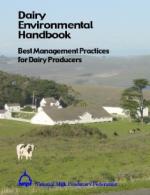Mark Twain observed that history doesn’t repeat itself, but it does rhyme. We can hear those rhymes while listening to the familiar patterns of the dairy market, particularly as the 21st century unfolds. The question we have to answer, as history echoes around us, is what can and should we be doing differently in this New Year to help make the rhymes of our economy be as harmonious as possible?
As 2015 gets underway, farm-level milk prices have dropped from their record high at the end of last summer. January’s Class III price will be at least one-third less than the September peak of $24.60, with further declines in the offing. World prices have already seen an enormous retrenchment in the past six months. What’s remarkable about this turn of events is that it’s not remarkable in the least; in fact, it’s emblematic of the cycle we’ve been observing in recent decades. The years 2003, 2006, 2009 and 2012 all brought downturns in milk prices. And yes, these troughs were interspersed with years of much stronger prices, like what we saw in 2014, but the trend is clear that 2015 will be a year of weaker milk prices.
As the familiar axiom correctly states, high prices tend to cure high prices, and the rhyme is the same for low prices. It’s a function of how markets respond to price-driven pivots in supply and demand. Yet, the issue remains: how can individual farmers and other relatively small players in the global market for dairy foods protect themselves from the times when the pendulum swings, and aims to knock them from their feet?
There are several answers, the most obvious of which is that America’s dairy farmers now have a new tool to hedge against the combination of lower milk prices and high feed costs. The U.S. Department of Agriculture announced last month that approximately half of America’s 46,000 dairy farmers enrolled for 2015 in the new Margin Protection Program. For a brand new program, initiated in a year of record-high prices, a 50% enrollment rate represents a glass that’s more than half-full.
This is especially true in light of the fact that during most of the signup period last fall, the forecast for milk prices in 2015 was sufficiently solid that the corresponding MPP margins would not have produced any payouts. It was only in December, when commodity prices stumbled, that the real need for the MPP became apparent. If it does generate payments this year, interest in the program will certainly become greater still for coverage in subsequent years.
Another tool to help blunt the impact of the roller coaster is Cooperatives Working Together. Now in its 13th year of operation, CWT remains the only farmer-funded and managed tool to help build U.S. dairy sales overseas, reduce domestic stocks of products, and stimulate farm-level prices for America’s farmers. One of the big reasons why U.S. values for cheese and butter did not decline with the same speed or to the same degree as world prices last year, was because of the effort employed by CWT to assist the export of products that help domestic dairy farmers.
CWT just reported in its 2014 year-end summary that the equivalent of 2.5 billion pounds of milk was exported last year through the program’s acceptance of 582 bids to sell more than 190 million pounds of cheese, butter and whole milk powder. Importantly, the combination of these sales helped boost farmers’ milk checks by a collective 38 cents per hundredweight. As China and Russia have become more challenging markets for all exporters, the ability of U.S. dairy marketers to utilize CWT cannot be underestimated.
One area in which history does not rhyme, where CWT is concerned, is that we’ve learned, from the price collapse suffered in 2009, to do things differently. At that time, CWT did not invest all of its member dues in export assistance. Due in part to that dynamic, and the role of the now-defunct price support program, U.S. exports dwindled – even though overall global dairy sales did not. The U.S. ceded markets to its competitors, and our prices languished lower and longer than they could or should have. That’s a discordant note we don’t want to repeat again, in this year or any other.
Ours is a commodity business, prone to regular cycles of high and low. Eventually, conditions correct themselves. What we don’t want to have happen is that all of the correction be borne by farmers who burn through their equity – or worse, have to exit the business – to endure the troughs. Thanks to the MPP, and CWT, the dairy industry is learning from history, and editing the script so the future is an improvement, not an echo, of the past.
 The new 114th Congress will feature a large and active group of House members looking out for the interests of dairy farmers, thanks to efforts made by NMPF to work with the caucus to facilitate a dialogue between farmers and elected officials.
The new 114th Congress will feature a large and active group of House members looking out for the interests of dairy farmers, thanks to efforts made by NMPF to work with the caucus to facilitate a dialogue between farmers and elected officials.
 Work on two massive free trade agreements, both with major implications for U.S. dairy farmers, has intensified with the start of 2015.
Work on two massive free trade agreements, both with major implications for U.S. dairy farmers, has intensified with the start of 2015. In January, Cooperatives Working Together helped its member cooperatives sell 4.4 million pound of cheese and 14.4 million pounds of butter overseas. The products – the equivalent of 365 million pounds of milk on a milkfat basis – will go to customers in 14 countries on four continents.
In January, Cooperatives Working Together helped its member cooperatives sell 4.4 million pound of cheese and 14.4 million pounds of butter overseas. The products – the equivalent of 365 million pounds of milk on a milkfat basis – will go to customers in 14 countries on four continents. NMPF President and CEO Jim Mulhern defended animal care in the dairy industry and highlighted NMPF’s own responsible care program at the latest Food Dialogues session sponsored by the U.S. Farmers and Ranchers Alliance. The 90-minute online discussion originated from Boca Raton, Florida, and focused on animal care practices, particularly in the dairy industry.
NMPF President and CEO Jim Mulhern defended animal care in the dairy industry and highlighted NMPF’s own responsible care program at the latest Food Dialogues session sponsored by the U.S. Farmers and Ranchers Alliance. The 90-minute online discussion originated from Boca Raton, Florida, and focused on animal care practices, particularly in the dairy industry. NMPF joined more than 90 other agriculture and related groups last week in urging West Coast shippers and dockworkers to settle a dispute that has hampered exports, cut revenues, and wasted food, including dairy products intended for export across the Pacific.
NMPF joined more than 90 other agriculture and related groups last week in urging West Coast shippers and dockworkers to settle a dispute that has hampered exports, cut revenues, and wasted food, including dairy products intended for export across the Pacific. Graduate students researching dairy-related subjects are encouraged to apply for the National Dairy Leadership Scholarship Program. Each year, NMPF awards scholarships to Masters- or Ph.D.-level students conducting research of interest to NMPF member cooperatives and the dairy industry in general.
Graduate students researching dairy-related subjects are encouraged to apply for the National Dairy Leadership Scholarship Program. Each year, NMPF awards scholarships to Masters- or Ph.D.-level students conducting research of interest to NMPF member cooperatives and the dairy industry in general. As the result of objections raised by the National Milk Producers Federation, the U.S. Environmental Protection Agency (EPA) has withdrawn a regulatory guidance issued last year concerning when farmers must seek Clean Water Act permits for a long list of normal farming activities near wetlands.
As the result of objections raised by the National Milk Producers Federation, the U.S. Environmental Protection Agency (EPA) has withdrawn a regulatory guidance issued last year concerning when farmers must seek Clean Water Act permits for a long list of normal farming activities near wetlands. ARLINGTON, VA – The new 114th Congress will feature a large and active group of House members looking out for the interests of dairy farmers, according to the National Milk Producers Federation.
ARLINGTON, VA – The new 114th Congress will feature a large and active group of House members looking out for the interests of dairy farmers, according to the National Milk Producers Federation.



